QSFP Breakout Cable Ultimate Guide – Leveraging Port Splitting for Network Flexibility and Cabling Optimization
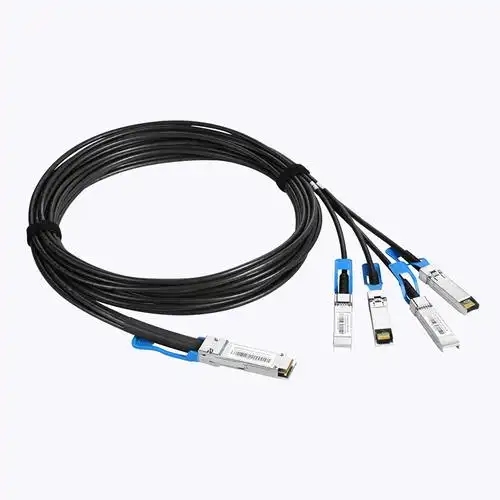
QSFP breakout cables address a significant problem faced by data center networks: limited port density with complicated cabling. QSFP breakout cables enable the division of a single high-speed QSFP port into multiple lower-speed interfaces, allowing for increased flexibility and an improved opportunity to employ current infrastructure efficiently. Together with the QSFP to SFP adapter, they can serve as tools to scale networks with increased capacity, without the need for additional hardware expense. Our ultimate guide to the technical aspects of breakout cables, their physical and logical layers, best practice approaches for connection to network designs, and next-generation trends will expose readers to opportunities for sound cabling design, port utilization, and planning for the future of their network environments.
What Is a QSFP Breakout Cable? The Physical and Signal-Level Breakdown
A QSFP breakout cable converts a single QSFP port operating at either 40G or 100G into multiple lower-speed SFP+ ports or connections; typically 4 x 10G or 4 x 25G. A QSFP cable is like a freeway splitting into multiple expressways, each carrying traffic independently to different destinations. Breakout cables offer ports that are limited by increasing the connectivity for QSFP ports without requiring new hardware.
At the signal level, breakout cables provide lane de-multiplexing to split the bundled QSFP signal into separate data lanes, maintaining signal integrity for connections that split. Depending on the type of breakout cable, lane de-multiplexing can be passive or active:
- A Direct Attach Copper (DAC) breakout cable is a passive electrical split; therefore, distances requiring a rack-to-rack connection should consider these solutions.
- An Active Optical Cable (AOC) cable, because electronic components amplify and equalize the signals to transport over a longer distance with lane separation.
- A fiber breakout cable, because each signal is multiplexed and de-multiplexed opto-electronically, is suited for high-bandwidth connections and longer reach between devices.
Regardless of the methods used for one breakout cable versus another, all work under the same premise of breaking down a single QSFP interface into multiple SFP+ lanes with no loss of throughput. By splitting the connection, the breakout cable optimizes the use of ports and gives a more flexible design opportunity to the network.
To visualize a breakout cable, imagine a broad data artery splitting into four lanes, each with clearly identifiable lanes, with each lane carrying content to an endpoint independently of one another, allowing for parallel flows of data simultaneously. This scenario illustrates the enhanced granularity of control afforded to network designers architecting their bandwidth so that hardware can interoperate in a flexible manner.
 How Do QSFP+ to SFP+ Adapters Complement Breakout Cables?
How Do QSFP+ to SFP+ Adapters Complement Breakout Cables?
QSFP+ to SFP+ adapters are a valuable option, providing a bridging solution that allows QSFP ports to interact with SFP optics, without physically splitting the lanes in the same way as breakout cables. In a way, breakout cables are similar to highways that physically break traffic down into several smaller roads, while adapters are more like a translator interpreting between two different languages or protocols, allowing devices with QSFP interfaces to transparently interact with equipment with SFP modules.
Technically, an adapter takes the electrical interface of the QSFP and converts it to multiple independent SFP signals. Adapters provide signal conversion within a singular device while they do not split or extend the connection at the physical layer, as breakout cables do. Consequently, adapters usually result in lower cabling complexity, but most likely will not provide the level of port multiplication that breakout cables do.
For environments that require QSFP and SFP transceiver compatibility, but where port density enhancement will not be required, adapters are an effective solution. Adapters are useful for connecting legacy gear, or if simple protocol conversion is all that is required. In contrast, breakout cables are best when physical splitting of one port in order to service multiple devices is required from one high-speed port.
When to use an adapter or a breakout cable is situationally dependent upon network architecture requirements, equipment compatibility requirements, or cabling complexity or constraints. Both function as supplementary elements of modern networks, enhancing flexibility and protection of investment, while solving different operational challenges.
How Breakout Cables Revolutionize Leaf-Spine and Spine-Leaf Network Architectures
Breakout cables have transformative value in leaf-spine and even spine-leaf network architectures because they significantly increase the port density of core and spine switches. The best analogy we can use is to think of switches as highways. Breakout cables function like exits off the highway that have several lanes, leading traffic into multiple smaller roads. With breakout cables, switches are capable of very high-speed trunk connections, with well over 100 times the number of connectivity options than there would be without breakout cables, providing a great deal of flexibility and bandwidth potential without the need to procure additional hardware.
In a typical data center architecture, adding ports to switches often involved buying expensive chassis switches that provide high port densities. Breakout cable options limit or eliminate the need for chassis switches by allowing one QSFP port to split into four SFP+ ports, multiplying the available interfaces. This relatively simple use of breakout cables allows us to reduce aspects of capital expenses while increasing usage potential from existing infrastructure.
Breakout cables employed in this manner provide logic for relying on modular network growth. As traffic patterns are not linear, some links may need higher throughput, while others may have links that remain uneventfully lightly loaded. Breakout cables can provide management flexibility to assign bandwidth based on rules established in the organization’s connectivity plan, because they allow for heterogeneous port speeds to be supported from a single, high-density chassis port. A 40G QSFP port can break out into four independent 10G SFP+ hosts, which can match the exact requirements of workload assignment.
Network designers who deploy breakout cables will also appreciate the reduced layout complexity of cabling and increased utilization of rack space. Unlike not using breakout cables, if cabinets are located appropriately within a data center or another high-density employment of network equipment, placing breakout cables at the spine layer or at the leaf layer will reduce overall fiber runs, reduce the overall bulk of the cabling, reduce the overall complexity of physical management of cables, and enhance airflow around equipment.
 How Breakout Cables Solve Network Port Density Challenges and Simplify Cable Management
How Breakout Cables Solve Network Port Density Challenges and Simplify Cable Management
Network operators commonly suffer from QSFP port scarcity that limits expansion options or creates more costly options to execute; the excess hardware cost is simply unavoidable. One solution may be breakout cables, as breakout cables can create a much greater number of smaller SFP+ connections from one QSFP port and maximize available QSFP ports to create additional ports. In this regard, breakout cables may reduce the need to support movement to more expensive, larger, and high-port-count switches.
Another significant pain point in data centers comes as a result of cable clutter; breakout cables can help reduce the number of physical connection points by combining or grouping multiple links through a single cable assembly. Breakout cables ultimately reduce the amount of cable bulk and allow for better routing in proprietary racks and standardized cable trays, improving airflow as well as minimizing plug/unplug incident damage.
Placement tactics are generally an easy way to noticeably streamline breakout cable deployment by staggering which racks break out at the data center aggregation layer (between the spine and leaf switches), but can be very effective at preventing bottlenecks when used with larger port pair breaks, particularly when connecting previously clustered devices using fewer cable runs.
For an undesirable yet potential challenge with breakout cables, some organizations leveraging existing infrastructure management tools should find it useful to integrate with digital management tools to highlight exactly how cables were deployed to a largely irrelevant detail; this will help maintain visibility in complicated breakout scenarios. Certainly, the ability to document the approach and accurately reference cables through either real-time or legacy reporting makes reactive maintenance quicker, responsive troubleshooting power more rapid, and easily reduces any downtime to the network.
Overall, breakout cables provide a unique solution to many data center cabling predicaments by simply converting a disorganized, inflexible cabling construct into simple, logical, and scalable network connectivity. In contrast to previously deploying multiple discrete cables, breakout assemblies may radically transform the cable length and impact behind the media connectors, creating less mess, reducing effort, and minimizing incident/provable error distances. Collectively, deploying breakout cables will potentially reduce the associated time linked with installation and provide additional efficiency to daily operations, making normalized growth less expensive.
How to Choose the Ideal QSFP Breakout Cable: Technical Criteria and Use Case Alignment
When choosing a QSFP breakout cable, every consideration is important to achieve appropriate network performance and cost-effectiveness. There are three types of breakout cables: Direct Attach Copper (DAC), Active Optical Cable (AOC), and fiber optic breakout cables. Each cable has unique properties that suit specific use cases.
DAC cables are generally the least expensive and provide the lowest latency because they use passive copper wiring. This makes them the ideal choice for short-distance, high-density rack-to-rack interconnects. The caveat of DAC is that the reach is limited, usually to around 7 meters.
AOC cables, like DAC, use copper connector terminations, but they also incorporate active electronics to transceive the data from electrical signals to optical signals, allowing for longer distances—often up to 100 meters or more—while maintaining high integrity of the signal. AOC also requires less power and diminishes any electromagnetic interference, which can be challenging in complex data center environments.
Fiber optic breakout cables provide the extended reach and highest bandwidth possible, using various optical multiplexing techniques. Fiber optic breakout cabling ‘splits’ the expanded QSFP port into a number of SFP+ optical links, while spanning several hundred meters to kilometers of distance. For larger campus or metro-area network deployments, they are the preferred choice.
When deciding which cable to use, consider:
- Storage and reach requirements: Ensure the cable type matches the anticipated distance span.
- Power budget and consumption: Required to manage physical cooling and perceived costs for energy-saving applications.
- Latency sensitivity: DAC provides the least latency; optical has minor latency.
- Network environment: Amount of electromagnetic interference; physical space constraints.
| Cable Type | Max Reach | Power Consumption | Latency | Ideal Use Case |
| DAC | ~7m | Low | Lowest | Short rack-to-rack connections |
| AOC | ~100m+ | Moderate | Low | Mid-distance connections |
| Fiber Optic | Several km | Moderate-High | Low-Mid | Long distance links |
Vendor reliability and certification are also important for cables to be interoperable and available for prolonged usage. A reputable manufacturer will have tested cables across many conditions and will provide warranties and support. Using cables in line with vendor specifications ensures, for the most part, that your network will be capable of running for a long time, importing properly, and will indeed be reliable.
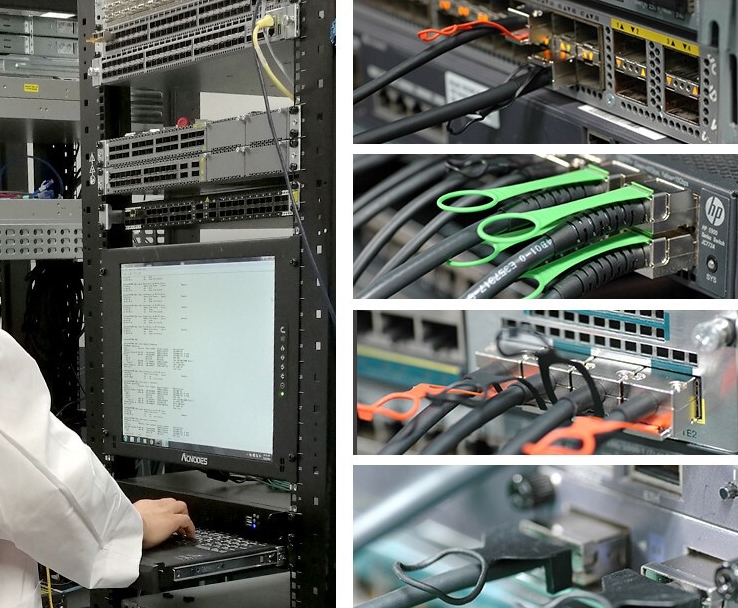
A Holistic View of a Breakout Cable Solution in a Large-Scale Network
A complicated data center needed a solution for limited ports and significant cabling clutter that had hampered expansion. By introducing a combination of breakout cables and QSFP-to-SFP adapters, the network team was able to multiply available ports without buying additional, expensive chassis. This vital cable strategy reduced port blocking and link utilization was optimized efficiently using the underlying cabling and physical infrastructure.
Some positive benefits were monitored, including improved overall efficiency of bandwidth, a 20% reduction in cabling-related errors, and significant savings on hardware and operational costs. Overall, the takeaways from the deployment showed breakout cables can have a major impact on eliminating port density bottlenecks when you need to expand your network.
Future Outlook: Advancing Breakout Cable Technology and Preparing for Network Evolution
Next-Generation Breakout Cables: Toward Higher Speeds and Greater Density
Breakout cables have continually evolved to keep pace with an ever-expanding bandwidth demand that is now in excess of 200G, 400G, and beyond, while still maintaining backward compatibility with legacy equipment and cabling standards. Breakout cables are becoming even more intelligent, with more and more active electronics focused on improving signal quality and reducing power consumption, as well as enhanced operational visibility thanks to valuable diagnostic capabilities. Breakout cables come in various form factors, which means higher port density becomes possible today, which is important for contemporary data centers.
How to Plan for Upgradable, Scalable Networks
Future-proofing is a fancy term associated with investments in breakout cables and other network hardware designed for easy modular upgrades and multi-speed use. This includes working backward from the cabling plan to forecast bandwidth demand as an organization grows and planning for future speeds. Future-proofing is also accomplished by selecting solutions that provide easy vendor firmware upgrades that are seamless. A strategic planning process that considers future-proofing accelerates time to value while reducing the risk of expensive re-cabling in supporting legacy infrastructure, maximizing the overall investment in the network lifecycle.
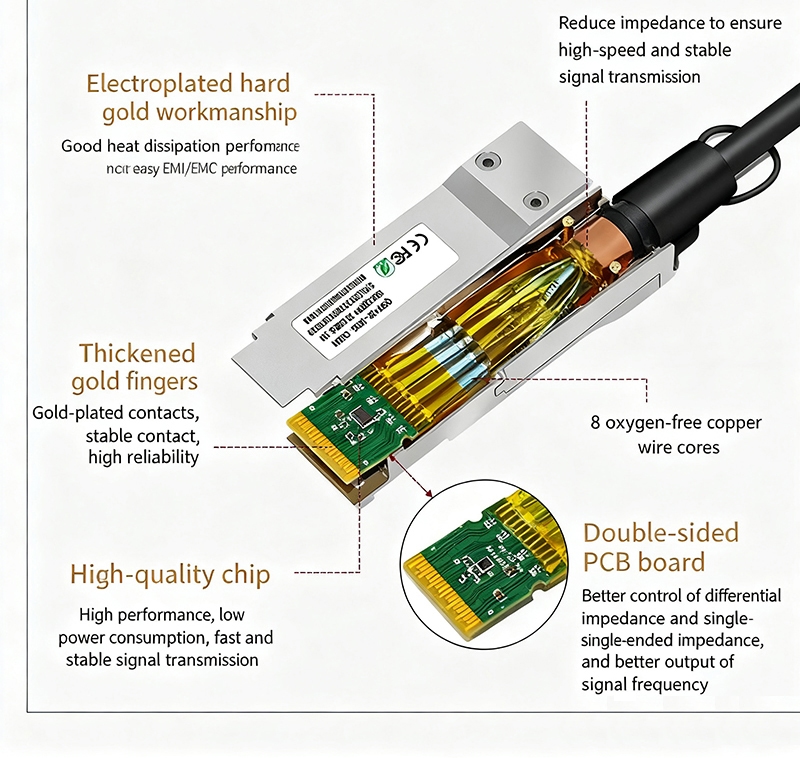
FAQs
How are QSFP breakout cables different from QSFP to SFP adapters?
A QSFP breakout cable splits the physical aspect of a single QSFP port into multiple SFP+ ports, allowing a single multi-lane connection to occur simultaneously, with each SFP+ port represented as a split port. A QSFP to SFP adapter only converts the QSFP interface to allow for a QSFP to function either electrically or optically with SFP modules via an adapter but does not split the lanes intended for the ports.
Can breakout cables be used in place of DAC or AOC cables?
A breakout cable may be a DAC or AOC type, but breakout cables perform a different physical function than standard DAC/AOC cables. A breakout cable is physically splitting one port into several ports, whereas a standard DAC or AOC only connects a single port with a direct end-to-end connection. Your design architecture and distance will determine which type you require.
What is the typical length capability of breakout cables?
Traditionally, DAC breakout cables have a maximum length of 7 meters, AOC breakout cables typically have lengths reaching 100 meters or more, and depending on the exhibits and the quality of the fiber, a fiber breakout cable may exceed several kilometers.
How can I make sure that I am using breakout cables that are compatible with my networking gear?
Ensure you have a switch/router that supports breakout as mentioned in your specifications, verify the specifications for the supported cable types for the device you wish to install, and equally have your vendor verify to ensure the breakout cable is purchased using the correct vendor-certified parts to avoid any interoperability issues.
What are some best practices for attaching and installing breakout cables?
Be cognizant of how breakout cables are installed; they are intentionally sensitive and can be damaged quickly. Avoid tight bends, keep the connectors clean before plugging them in, label effectively, and document the connections for future reference to maximize the standby time and effort spent on orderly wiring.
Do breakout cables generally affect latency or power?
DAC breakout cables typically consume very low latency and low power consumption. AOC and fiber cables may consume more power and introduce a slightly higher latency due to the effect of electronics as active cables. However, in extending the distance and drifting from its resources, DAC, AOC, and fiber cables consume a low order of latency and power without question.
What is the best way to troubleshoot common breakout cable problems?
Use vendor diagnostic CLI commands that your vendor would support (e.g., show interfaces transceiver detail on Cisco) to check for power, error rates, temperature, etc. Also, perform a visual inspection of the breakout cable’s copper end and use cable testers to identify damage to the physical pathways, only if the pre-installed cables are unverified for the integrity of the wire.
Conclusion
Breakout cables provide tremendous network flexibility and savings in the operational costs associated with port limitations and the complexities of cabling. Determining how breakout cable technology works, selecting the best type of breakout cable for your design, ensuring your infrastructure can support breakout cable types, and following best practices for deployment will all maximize the tremendous potential breakout cables offer. We hope this guide, along with its recommendations and practical tips, can become your authoritative resource for the deployment of breakout cables to help you create truly scalable networks that continually evolve with the changing demands of the organization.

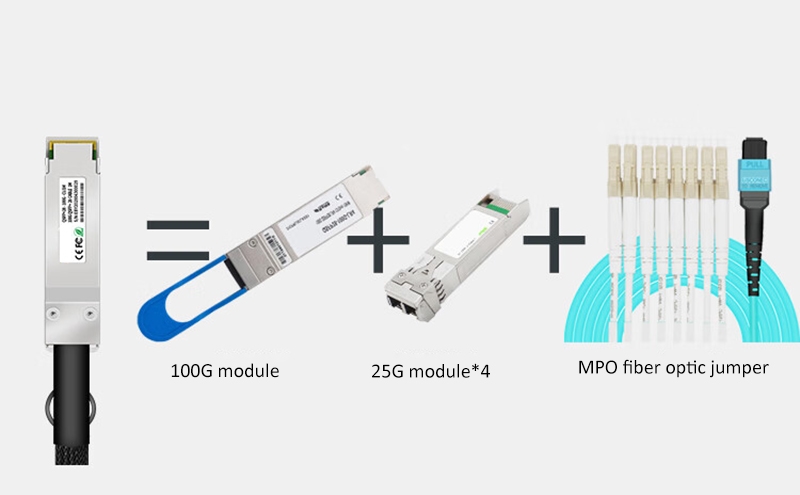 How Do QSFP+ to SFP+ Adapters Complement Breakout Cables?
How Do QSFP+ to SFP+ Adapters Complement Breakout Cables?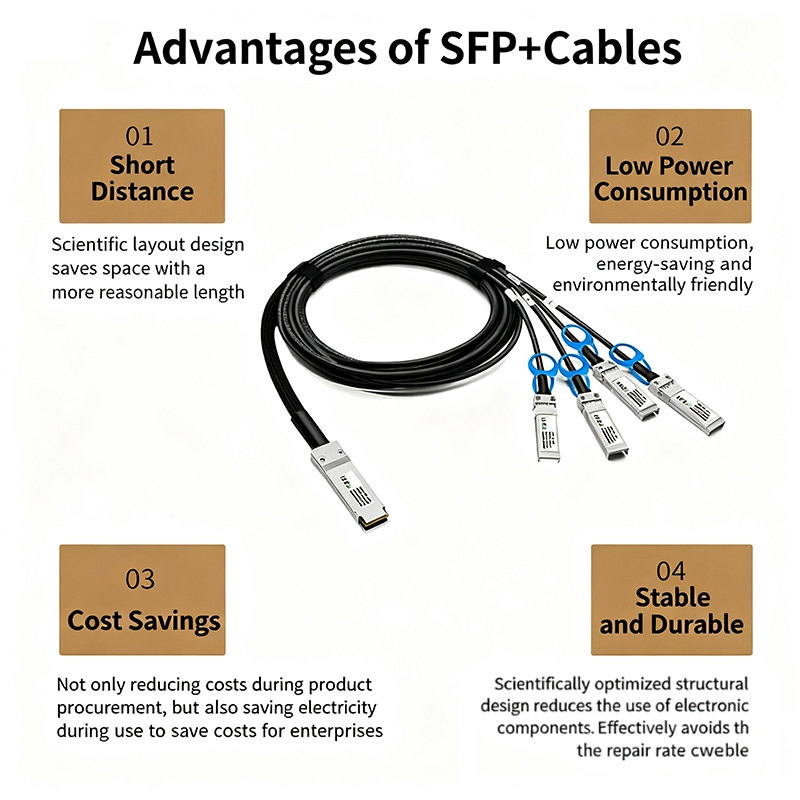 How Breakout Cables Solve Network Port Density Challenges and Simplify Cable Management
How Breakout Cables Solve Network Port Density Challenges and Simplify Cable Management